Everything You Need to Know About Marcel Duchamp Before Seeing the AGNSW's Huge Survey of His Work
Despite changing the course of modern art, Duchamp is one of the most unknowable figures in art history — 'The Essential Duchamp' is hoping to change that.
In partnership with
This April, the Art Gallery of NSW is unveiling The Essential Duchamp, a landmark exhibition showcasing 125 works and materials from the captivating career of French artist Marcel Duchamp. If you're not too familiar with Duchamp himself, you'll probably still recognise his most controversial works — he's the dude that basically decided a urinal could be considered an artwork if an artist said it was, thus paving the way for manufactured objects to be considered and recognised as art (what Duchamp called 'readymades').
But there's more to his six-decade-long career than controversy. To prime you (art pun intended) for your visit, we spoke to the AGNSW's curator of modern and contemporary international art, Nicholas Chambers, to find out five things you should know about the iconoclastic artist — and obsessive chess player — whose irreverence, agility and refusal to heed the status quo single-handedly changed the course of modern art forever.
![]()
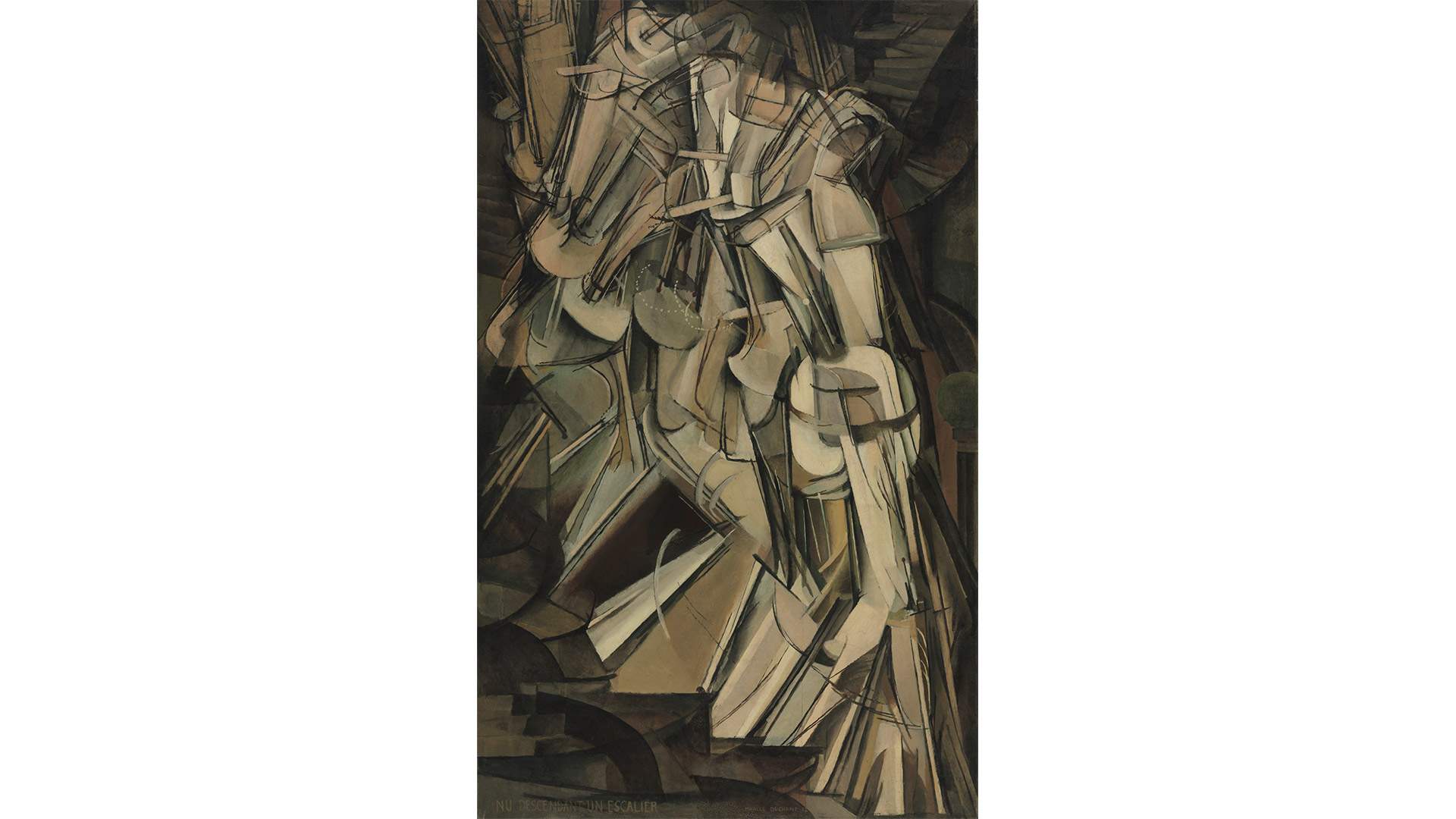
Marcel Duchamp: Nude Descending a Staircase (No 2); 1912. Philadelphia Museum of Art, the Louise and Walter Arensberg Collection, 1950-134-59 © Association Marcel Duchamp/ADAGP. Copyright Agency, 2019.
DUCHAMP NEVER SETTLED
Looking back on his career, Duchamp said: "I didn't want to pin myself down to one little circle, and I tried at least to be as universal as I could." A huge part of his ongoing appeal lies in the way he fought against the idea of the artist as a brand, avoiding being pigeonholed into a particular style or becoming a card-carrying member of a movement — even dadaism, a movement that he was a pioneer of. You'll experience Duchamp's diversity as you move through the exhibition, which Chambers promises "reveals just how agile he was as an artist, able to move so deftly between different art forms and ideas". Duchamp welcomed self-contradiction and embraced a broad array of influences, some of which he'd try on for a while, make his own and then abandon — as you'll see in his early painting, Nude Descending a Staircase, No.2 (1912), where he essentially mic dropped a highly original take on cubism, caused quite le scandale at the 1913 New York Armory Show, then decided to leave painting behind to focus on less traditional ways to operate as an artist.
![]()
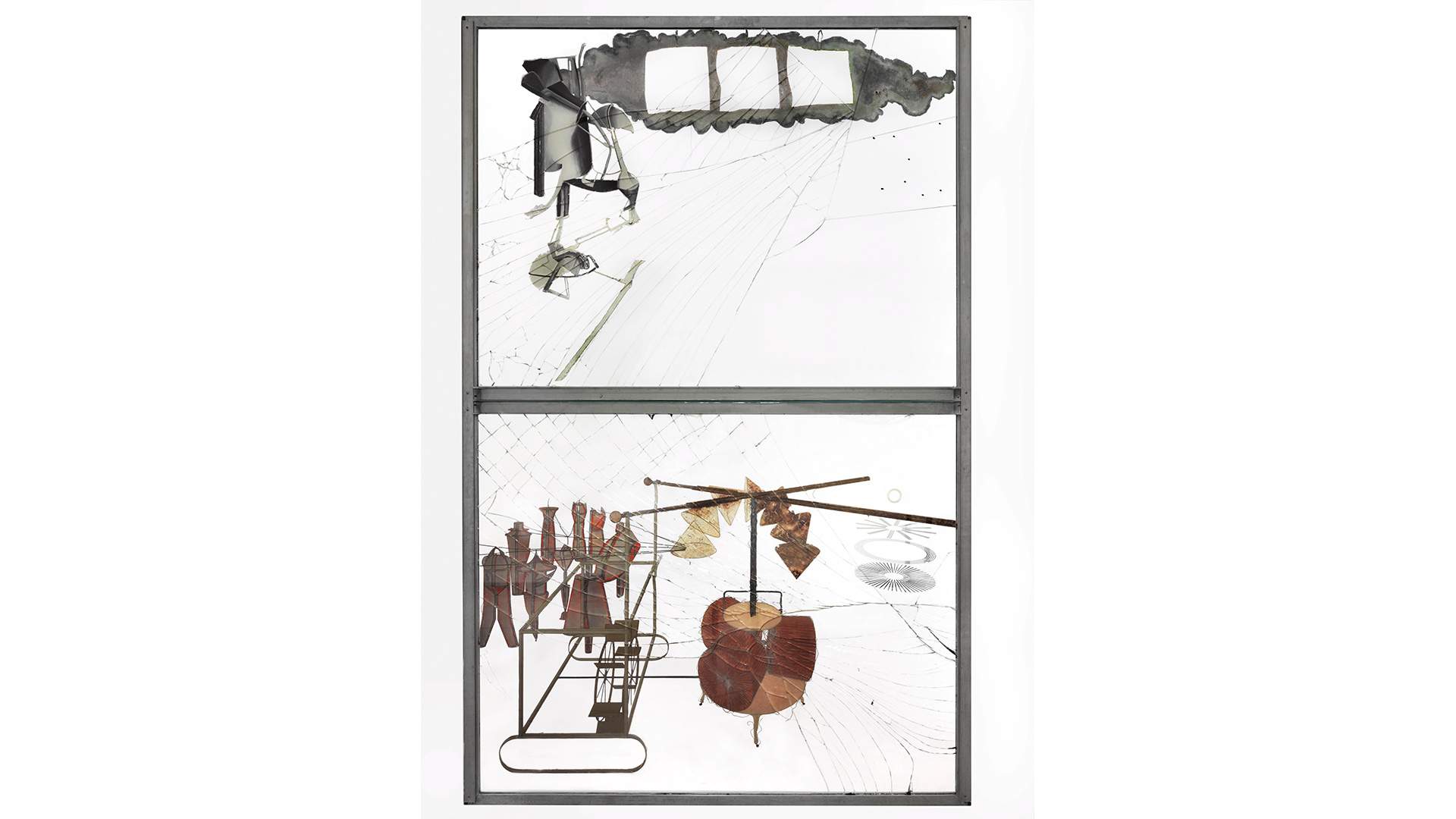
The Bride Stripped Bare by Her Bachelors, Even (The Large Glass); 1915-1923, oil, varnish, lead foil, lead wire, and dust. Philadelphia Museum of Art, bequest of Katherine S. Dreier, 1952 © Association Marcel Duchamp/ADAGP. Copyright Agency, 2018.
DUCHAMP PROVOKED CONVERSATION
No stranger to controversy, Duchamp believed that art's purpose wasn't to provide visual pleasure, but rather to shake things up and engage people intellectually. Painting, for example, in his words "should not be exclusively retinal or visual; it should have to do with the grey matter, with our urge for understanding." From Nude Descending a Staircase, No. 2 (1912) to the game-changing readymade Fountain (1917) (that's the urinal) to the "definitively unfinished" glass composition The Bride Stripped Bare by Her Bachelors, Even (The Large Glass) (1915–23), Duchamp's work started conversations — sometimes heated ones — and activated discourse. Seriously, can you imagine some of the reactions to 1913's Bicycle Wheel, his first readymade? Just who is this guy who thinks he can plonk a bicycle wheel on a kitchen stool and call it art? His work remains provocative in 2019, says Chambers, prompting and compelling us "to reflect on questions of taste. How is value determined in the art world? What's at stake when artists, viewers, curators or critics make aesthetic judgements? He provokes us to question the most basic conventions of art appreciation".
![]()
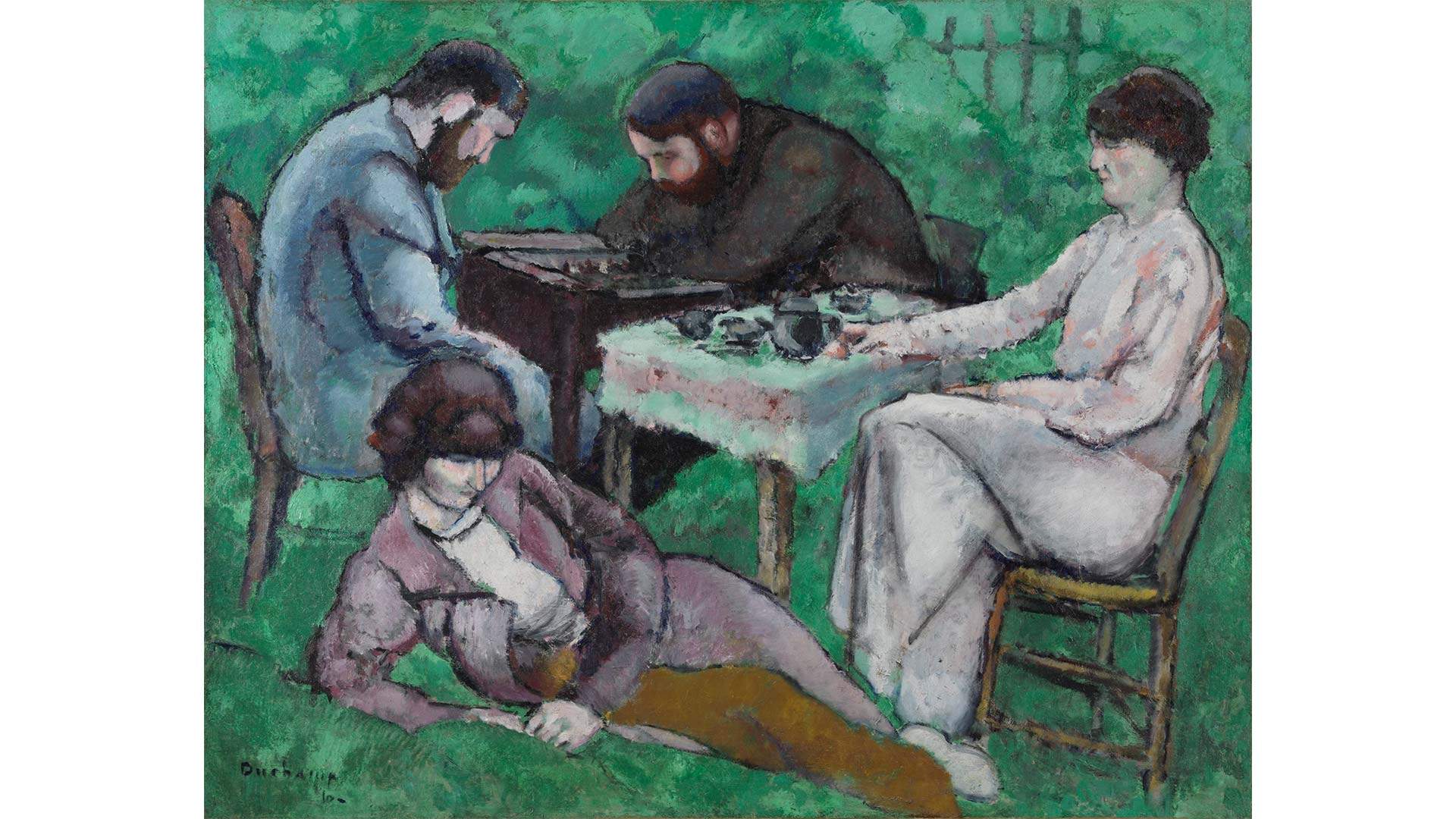
Marcel Duchamp: The Chess Game; 1910. Philadelphia Museum of Art, Louise and Walter Arensberg Collection, 1950 © Association Marcel Duchamp/ADAGP. Copyright Agency, 2019.
DUCHAMP REALLY, REALLY LIKED CHESS
Several Duchamp works take chess as a theme, including the early painting The Chess Game (1910), which depicts his two brothers — both of them also artists — hunched over a chessboard in their studio's garden. A lifelong devotee of the game who eventually acquired the title of Master and competed for the French national team in multiple Chess Olympiads, in the early 1920's it was even (falsely) rumoured Duchamp was abandoning the art world entirely to focus on chess full-time. Chambers notes that chess actually "provides an interesting analogy for thinking about Duchamp's project at large: an approach to art and life that's at once playful and strategic". In both art and chess Duchamp believed in taking risks, but could also take a slow and steady approach; he could revel in the endless combination of tactics and moves — or styles and techniques — available, but he could also step outside a trend or movement to see the bigger picture, and triumph. Whether Duchamp ultimately preferred chess over art is a matter of argument; however he is often quoted as saying: "While all artists are not chess players, all chess players are artists." Make of that what you will.
![]()
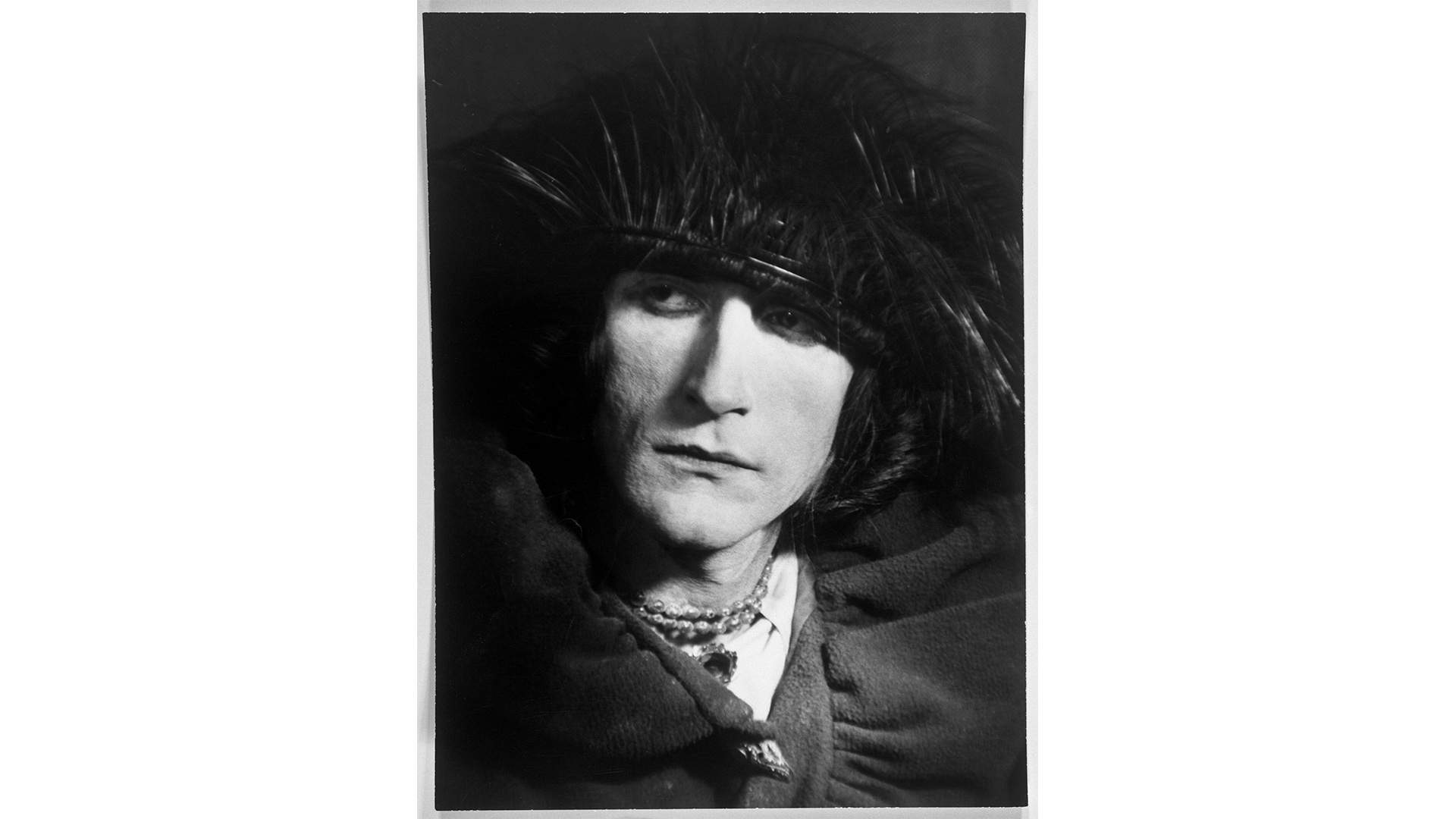
Man Ray: Duchamp as Rrose Selavy; 1921–26. Philadelphia Museum of Art, gift of Jacqueline, Paul and Peter Matisse
in memory of their mother Alexina Duchamp, 13-1972-9(763a,b). © Man Ray Trust/ADAGP. Copyright Agency, 2019.
DUCHAMP WAS ENIGMATIC
"There was always a lot of mystery surrounding Duchamp — both his person and his productions," says Chambers. Duchamp actively perpetuated rumours he had retired from the art world, loved wordplay and language games and often signed his works with false names, such as Fountain (1917) which is signed 'R. Mutt' — a joke of which even Duchamp became slightly murky on the exact origins. During the 1920s he created a female alter ego named Rrose Sélavy (ask a French speaker to point out the aural gag) whose name adorns several of his readymades. Many of his works feel full of clues to meanings just beyond our grasp, and he could be deeply secretive — the last 20 years of his life were spent working on a piece only a few people knew about entitled Étant donnés (1946–66), which you'll see a digital presentation of in the exhibition. Testing the boundaries of his own image as an artist, Duchamp relished a sense of play, mystery and freedom, stating: "I believe that art is the only form of activity in which man as man shows himself to be a true individual."
![]()
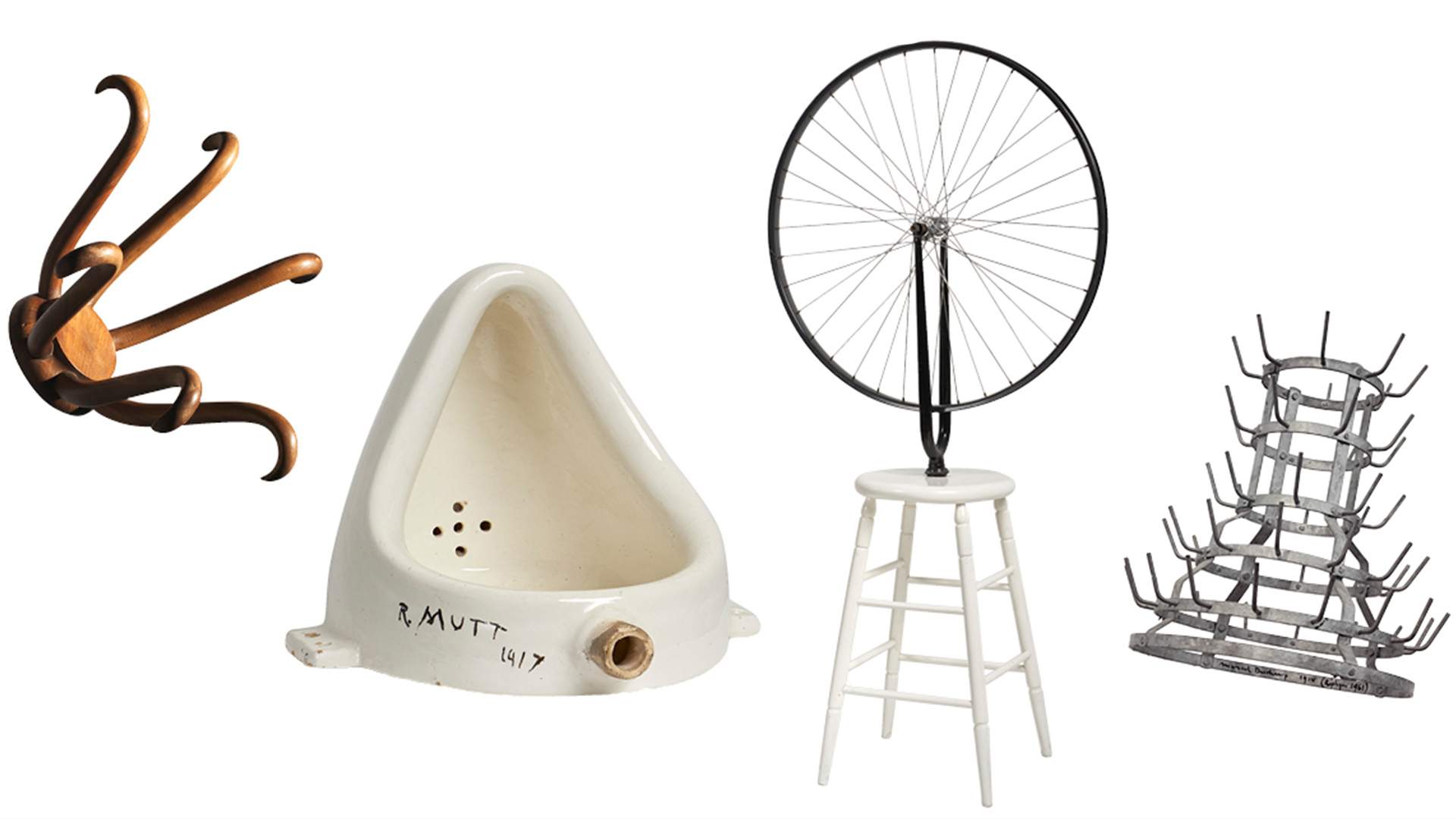
Marcel Duchamp Hat Rack 1964 (replica of 1917 original) National Gallery of Australia, Canberra; Fountain 1950 (replica of 1917 original) Philadelphia Museum of Art; Bicycle Wheel 1964 (replica of 1913 original) Philadelphia Museum of Art; Bottlerack 1961 (replica of 1914 original) Philadelphia Museum of Art, © Association Marcel Duchamp/ADAGP. Copyright Agency, 2018.
DUCHAMP CHANGED THE WAY WE THINK ABOUT ART
Duchamp borrowed the term 'readymade' from the fashion industry to describe the everyday, mass-produced, often utilitarian objects he found, modified and declared to be artworks. Works such as Bicycle Wheel (1913), In Advance of the Broken Arm (1915) and Fountain (1917) were ironic, at times humorous acts of rebellion against what he called "retinal art" — their appeal to Duchamp lying in their very banality and visual indifference. It's impossible to overstate just how revolutionary it was in 1917 for an artist to suggest that a standard urinal should be included in a public exhibition. "The readymades on a fundamental level changed what we mean when we use the words art and artist," says Chambers. An artist now had the power to transform and elevate a humble snow shovel into an artwork. An artist by definition no longer had to be someone who uses their skill to make something original by hand — they could also appropriate something someone else (or even a machine) had made, and give it new meaning in an artistic context. Art could be more about an idea than the object itself. And it definitely didn't have to please the eye — it could please the mind instead.
![]()
You can catch The Essential Duchamp at Art Gallery of NSW between April 27 and August 11, 2019. Admission is ticketed and can be purchased in person or online. AGNSW is open 10am—5pm daily, with extended hours until 10pm on Wednesday.






